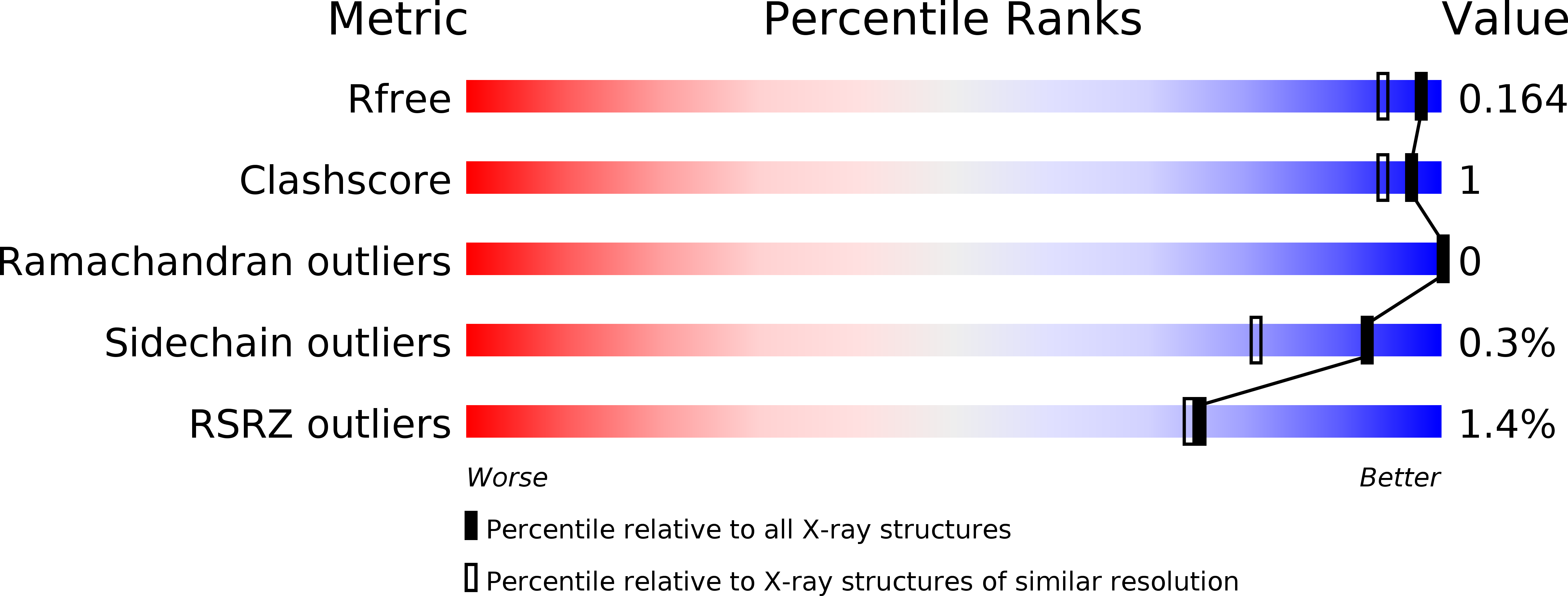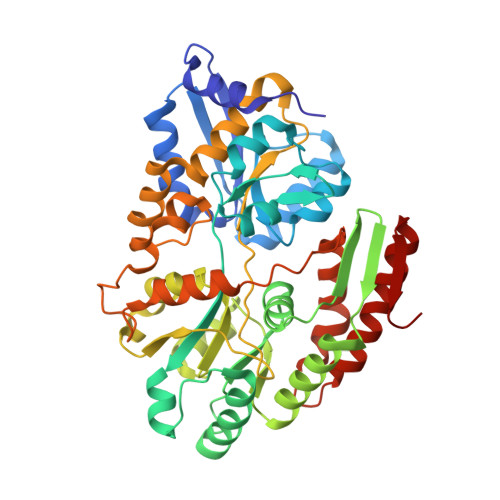Evolutionary adaptation in fucosyllactose uptake systems supports bifidobacteria-infant symbiosis.
Sakanaka, M., Hansen, M.E., Gotoh, A., Katoh, T., Yoshida, K., Odamaki, T., Yachi, H., Sugiyama, Y., Kurihara, S., Hirose, J., Urashima, T., Xiao, J.Z., Kitaoka, M., Fukiya, S., Yokota, A., Lo Leggio, L., Abou Hachem, M., Katayama, T.(2019) Sci Adv 5: eaaw7696-eaaw7696
- PubMed: 31489370
- DOI: https://doi.org/10.1126/sciadv.aaw7696
- Primary Citation of Related Structures:
6HUR, 6HUS - PubMed Abstract:
The human gut microbiota established during infancy has persistent effects on health. In vitro studies have suggested that human milk oligosaccharides (HMOs) in breast milk promote the formation of a bifidobacteria-rich microbiota in infant guts; however, the underlying molecular mechanism remains elusive. Here, we characterized two functionally distinct but overlapping fucosyllactose transporters (FL transporter-1 and -2) from Bifidobacterium longum subspecies infantis . Fecal DNA and HMO consumption analyses, combined with deposited metagenome data mining, revealed that FL transporter-2 is primarily associated with the bifidobacteria-rich microbiota formation in breast-fed infant guts. Structural analyses of the solute-binding protein (SBP) of FL transporter-2 complexed with 2'-fucosyllactose and 3-fucosyllactose, together with phylogenetic analysis of SBP homologs of both FL transporters, highlight a unique adaptation strategy of Bifidobacterium to HMOs, in which the gain-of-function mutations enable FL transporter-2 to efficiently capture major fucosylated HMOs. Our results provide a molecular insight into HMO-mediated symbiosis and coevolution between bifidobacteria and humans.
Organizational Affiliation:
Faculty of Bioresources and Environmental Sciences, Ishikawa Prefectural University, Nonoichi, Ishikawa 921-8836, Japan.
















